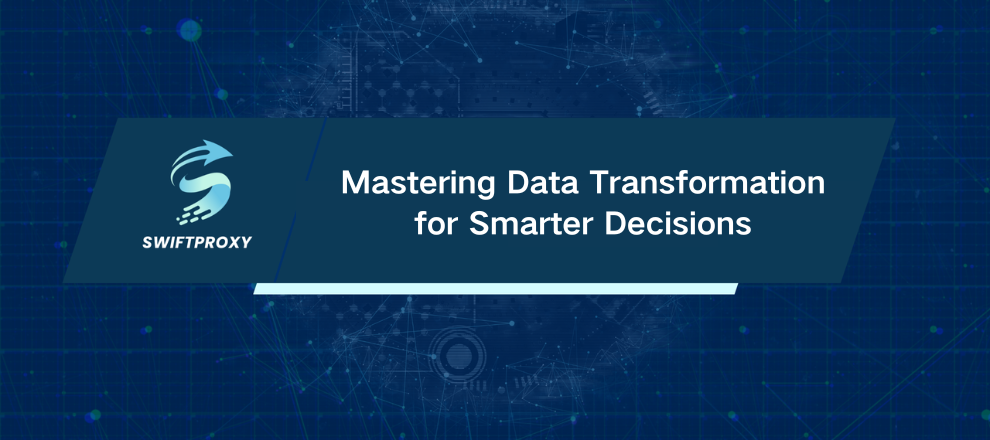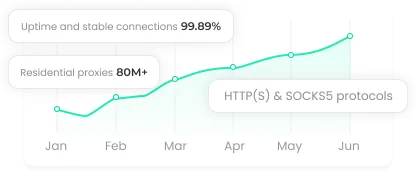Mastering Data Transformation for Smarter Decisions
Discover how combining precise data scraping with effective transformation turns messy, scattered data into actionable insights, smarter decisions, and competitive advantage.

Understanding Data Transformation
At its heart, data transformation is the art of reshaping data. It converts information from one format, structure, or range into another, making it ready for analysis, integration, or storage. Raw data rarely comes clean. Internal systems, web sources, and external feeds often produce data that's inconsistent, incomplete, or incompatible. Transformation is what fixes that.
It standardizes formats, corrects errors, fills gaps, and aligns values with business logic. Beyond these basics, transformation can enrich data by turning timestamps into day-of-week labels, merging multiple sources into a single schema, or deriving new variables to highlight trends. Without this step, data remains nothing more than a pile of numbers.
External data magnifies the need. Web platforms, marketplaces, and social media all have their own structures and terminologies. Transformation bridges the differences, delivering harmonized outputs ready for real-world decision-making. From marketing analytics to product development, it's the backbone of accurate insights.
The Challenges of Data Transformation
Transformation sounds simple—but it isn't. Organizations often wrestle with fragmented or inconsistent data that can derail projects or distort insights.
Format Diversity
Different systems, different structures. Merging them requires careful mapping, cleansing, and sometimes manual intervention.
Data Quality
Errors, outdated entries, missing values, and duplicates are everywhere. Without rigorous validation, transformed data can mislead rather than inform.
Scaling
Small datasets are easy. Millions of rows? Real-time streams? Suddenly, manual workflows fail. Automation becomes necessary, but not every team has the resources to build and maintain robust pipelines.
These challenges spike when dealing with external data that's dynamic and unpredictable. One day, formats shift, labels change, or new sources emerge. A flexible, reliable transformation workflow is essential.
Various Types of Data Transformation
Transformation isn't one-size-fits-all. Different methods solve different problems:
Structural Transformation
Reshapes data. Flip rows into columns, flatten nested JSON, or unify schemas. Crucial when integrating external platforms with inconsistent layouts.
Syntactic Transformation
Standardizes entries. Harmonize date formats, capitalization, currency symbols, and more. Even small inconsistencies can break analytics.
Semantic Transformation
Adds meaning. Translate IP addresses into locations, categorize product descriptions, or derive actionable classifications. It's the step that turns raw inputs into insight-ready data.
How Data Scraping Fuels Transformation
Transformation depends on quality input. Garbage in, garbage out. That's why precise data scraping is critical.
Web scraping captures up-to-date, structured data from platforms that traditional channels can't reach—products, pricing, reviews, market news, and more. The best scraping setups extract relevant fields, pre-format data, and filter noise before it even enters the transformation pipeline.
For example, a company scraping hotel rates across regions can receive ready-to-analyze data: organized by location, price, rating, and availability. That means transformation focuses on analytics, not cleanup. Geo-targeted scraping ensures that your data reflects local realities, supporting pricing decisions, trend analysis, and predictive modeling.
Combining scraping and transformation creates a streamlined workflow: better inputs, faster processing, stronger outcomes.
Pro Tips for Data Transformation
Start Clean: Prioritize structured, reliable data from the start. Use trusted providers or precise scraping methods.
Define Goals Early: Know what you need. Harmonization for reporting? ML model prep? Regional normalization? Clarity guides your transformation steps.
Automate Repetitive Tasks: Manual transformation doesn't scale. Automation maintains consistency and reduces errors, especially when paired with automated data collection.
Maintain Transparency: Log changes, track pipelines, and keep transformations reversible. Audits, troubleshooting, and compliance all depend on this.
Validate Outputs: Transformation isn't finished until the data aligns with business logic, retains integrity, and produces meaningful results.
Scale Strategically: As datasets grow, so does complexity. Scalable infrastructure ensures you can expand without breaking workflows.
Practical Applications
Travel and Hospitality: Scraped hotel pricing and reviews inform real-time pricing strategies. Geo-targeted scraping captures regional variations for accurate predictions.
E-commerce: Retailers transform competitor listings into structured datasets. SKU-level insights power pricing, stock management, and promotions.
Finance: Transformed market data and public filings feed models and decision-making. Accuracy at every step is essential.
Data Science and ML: Algorithms need clean, structured data. Scraped behavioral data and reviews must be transformed into features compatible with training models.
Conclusion
Data transformation is not just a technical step—it's a business enabler. Combined with precise data scraping, it turns scattered, messy inputs into insights, automation, and innovation. The companies that master this pipeline don't just survive—they lead.

















































